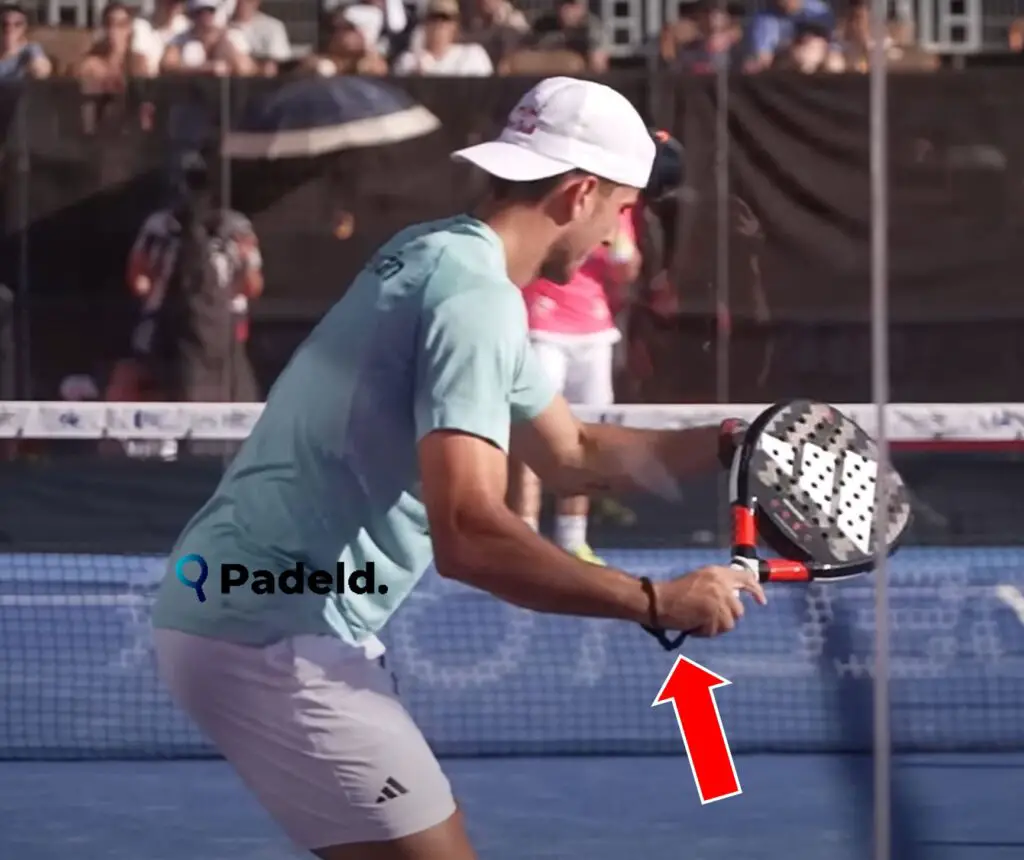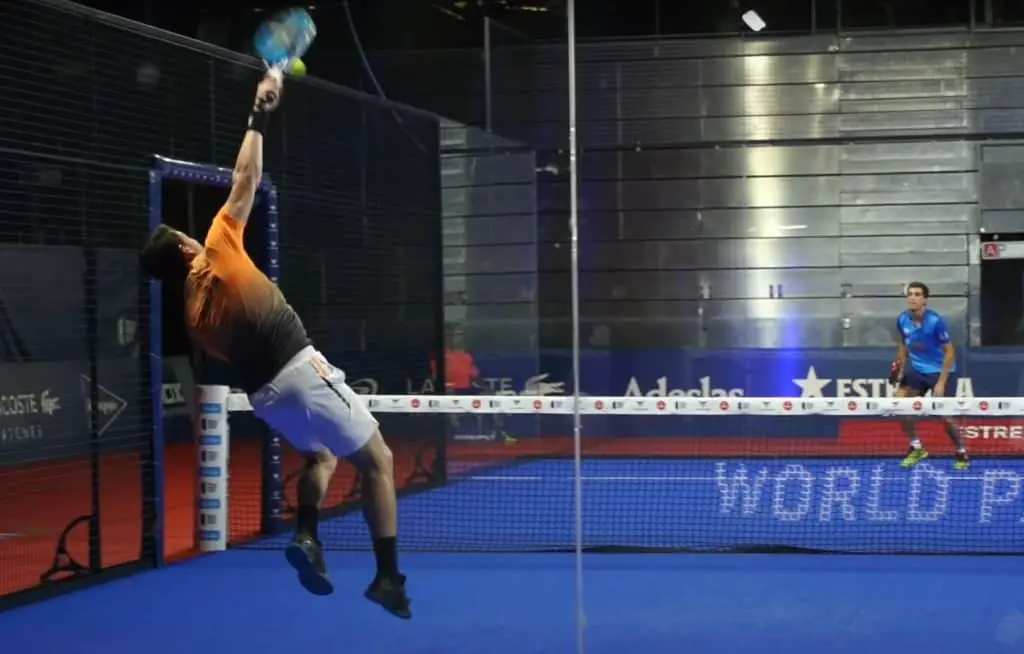The game of padel is all about wearing down and overcoming your opponent in order to win points. Some players try to do this through sheer power and brute force, by playing aggressive smashes whenever possible. Some players are more defensive in nature, and will aim to prolong rallies and allow their opponents to make mistakes. Other players are masters of placement, and what they lack in power they make up for with their ability to always get the ball in positions that are hard to defend. Lastly, we have the padel strategists! These are the players that are always looking to exploit weaknesses in the opposition and trying to play in ways that give them advantages.
A lot of individuals who enjoy the strategic side of the game wonder if changing hands during a game or during a point is something that could potentially give them an advantage. This is something that I also wondered when I first got involved in the sport, as I consider myself to be relatively ambidextrous! So, in this post I’m going to walk you through all of the information I found relating to switching hands in padel. We’ll cover whether it’s actually possible to switch hands according to the rules, and we’ll also go through the advantages and disadvantages it may offer you if it was allowed. Let’s begin…
So, can you change hands in padel?
Yes, in certain padel matches you are allowed to change hands. However, this is only really allowed during amateur & recreational matches. Padel rackets feature a wrist strap, & in most tournament matches this strap is not allowed to be removed. Therefore, in these kinds of matches, switching hands is not permitted.

To explain the above a bit further, it basically means that during most padel games you aren’t allowed to switch hands during the course of a point. You will only really be allowed to do this in games that aren’t being played competitively. So, while the ball is in play, it’s unlikely that you’ll be able to use this tactic. However, the story is slightly different once the point is finished and the ball is no longer in play. In this situation you are always allowed to swap hands, as long as you do it and re-attach the wrist strap of your racket before the next point begins.
Because switching hands during a point is not allowed in all padel matches, I would recommend not centring your entire padel technique around it. For example, if you switch hands all the time during practice and when you play matches against your friends, you may struggle to adapt if you end up playing in a serious competitive game in which it’s not allowed. In my opinion, you should build a solid padel technique and game plan without thinking about switching hands first. Then, once you’re playing in matches where it is allowed, you can consider using it.
That brings me nicely on to my next point! If you are a player who likes to switch hands during a point or at certain times during a game, make sure you check this is definitely allowed before you do it. I would recommend speaking with the match/event organiser, or one of the tournament officials in order to get a proper answer on an issue like this. Let’s face it, no one wants to lose a critical point by making a silly mistake like getting the rules wrong, so make sure you ask the right questions of the right people before you commit to switching hands.
What Are The Benefits Of Changing Hands?
Now that you know when you’re allowed to change hands, let’s examine why you might choose to do it. It’s pointless making a change like this unless it can offer you something in return, so allow me to walk you through why some people think it may be a good idea…
It Allows You To Hit A Wider Range Of Shots From Certain Positions
If you’re a naturally right handed player and the opponent hits the ball to your left, the only option that you really have to return the ball is playing a backhand shot. However, if you switch your padel racket into your left hand, this gives you the option of returning the same shot with a forehand instead.
If an opponent decided to consistently target your backhand side as they thought that was one of your weaknesses, you could switch your racket into your other hand and begin to play more powerful forehand shots like the Bandeja or the Vibora instead of the backhand. These types of shots may be a lot more difficult than a sliced backhand for your opponent to deal with, and could be a way for you to win the point much quicker than normal.
Obviously, playing shots like the Bandeja and the Vibora with your weaker hand is not an easy thing to do, and it will take a lot of practice before you feel comfortable hitting them. If switching hands during a point is something you want to do, not only will you need to practice the switch itself, but you’ll need to practice hitting with your weak hand even more. It’s pointless to make the switch if your resulting shot is weak, inaccurate and ineffective!
It Can Allow You To Exploit Weaknesses Of Your Opponent
Because switching hands allows you to play a wider range of shots, it also gives you a better chance to exploit the weaknesses of your opponents. For example, if your opponent is particularly weak against forehands that are played with plenty of pace and a slight bit of backspin, switching hands will allow you to play this kind of shot from more positions.
When your opponent plays a lob, they would much rather direct the lob towards your backhand side. This is because this would require you to play a backhand volley or a backhand slice to return the ball. However, if you can switch hands quickly during a point, you will be able to play a hard forehand smash to the same lob. I’d wager that most of your opponents would much rather have to return a backhand volley rather than a fast forehand smash, so again, switching hands allows you to put your opponent in a much tougher position than they may have been otherwise.

It Can Confuse Your Opponents And Disrupt Their Gameplan
If your opponents are never sure which hand you’re holding the racket in, then they can never be quite sure of how they’re going to target you. A lot of opponents will choose to target your backhand and keep the ball away from your forehand as the backhand side is traditionally the weaker side of a players game. But, if you’re a player who switches the hand they hold the racket in regularly, the opponent may not always be aware which side they should be targeting. They may also not be sure what sort of shots you’re going to play in return!
Can Help You Continue Playing When Injured
If you injure your dominant hand or your arm/shoulder whilst playing padel, switching the racket into your other hand can give you an excellent way to keep on playing! Let’s face it, none of us want to be sidelined by an injury, so improving your play with your other hand gives you a great defence against it.
What Are The Negatives Of Changing Hands?
In padel, any technical or strategic adjustment that you make to your game usually has positives and negatives. Switching the hand that you hold the racket with is no different! Let’s explore some of the negatives now…
It Could Be Against The Rules
As we’ve already discussed in this post, switching hands during a point in padel will be against the rules in a lot of matches and tournaments that you play in. So, if you try doing it in one of those matches/tournaments, you’ll probably end up getting warned by the umpire/referee, or they may even choose to award a point to the opposing team! This represents an obvious disadvantage, so as I’ve said previously, don’t try switching in a match like that!
Players Are Usually Weaker With Their Other Hand
We’ve already touched on this too, but it’s worth repeating again as it’s one of the obvious disadvantages of switching hands. Basically, 99% of players are not going to be as good playing with their other hand as they are with their dominant hand. Therefore, when you switch, you could potentially be reducing the effectiveness of your overall play and giving your opponents an easier ride. It may be a better option to just focus on playing with the one hand constantly and improving your skills from there!
Switching The Racket From One Hand To The Other Takes Time
In order to switch your racket from one hand to the other during a point, you need to first get the wrist strap off, pass the racket into your other hand and then attach the wrist strap on the other hand. All this takes time! And when you’re needing to act quickly in order to complete all the movements before your opponent hits the ball back towards you – it can be a bit of a stressful situation!
If you don’t get the racket off and then on your other hand in time, this can leave you in a really poor position to play your shot. This is obviously not a situation you want to find yourself in! Try and get the hand switch completed as quickly as possible if you want to avoid this.
Conclusion
I hope you enjoyed this post! It’s definitely essential to carefully consider the pros and cons of switching hands in padel before you decide whether to try it out yourself. If you decide that it fits your playing style and that it’s something you want to invest time into practicing, it could potentially be worth it! Just keep in mind that you probably won’t be able to switch during a point in the vast majority of competitive games that you play!
